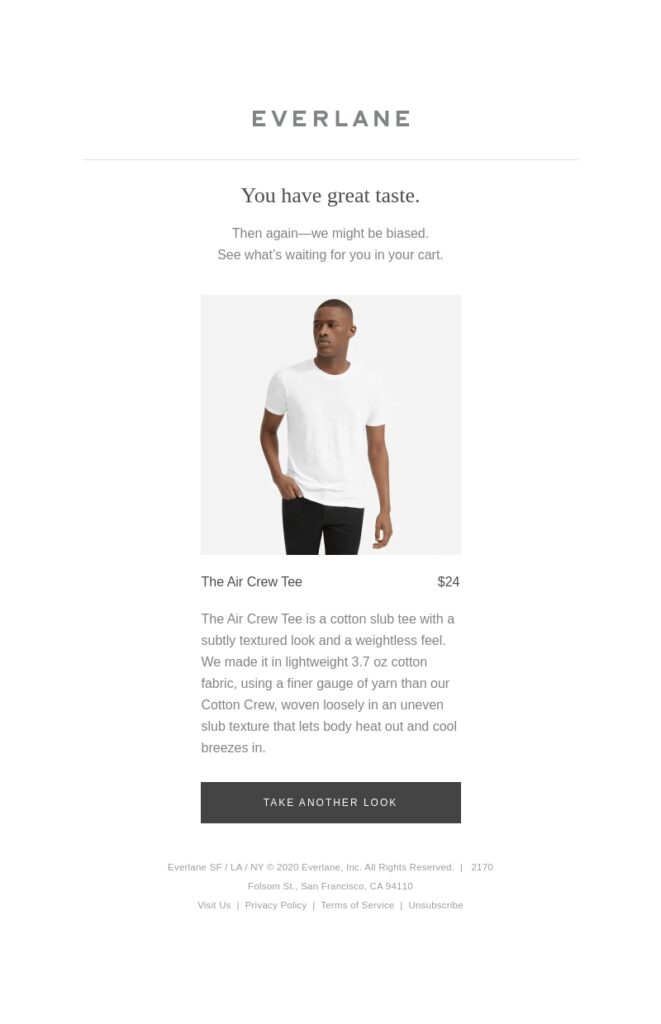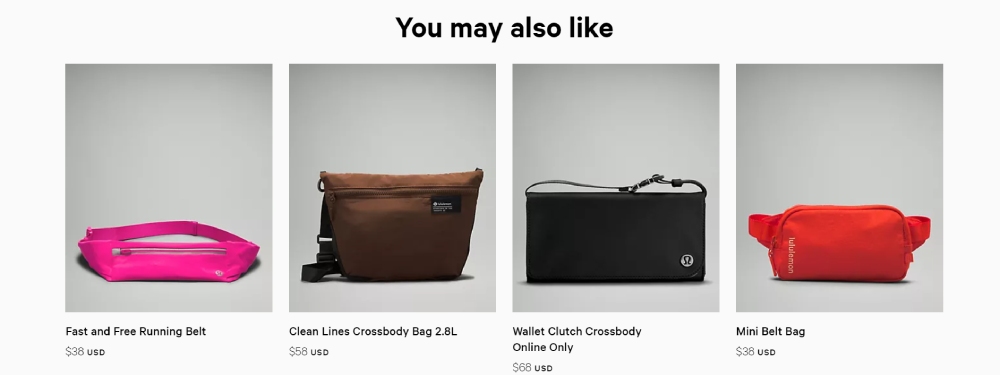
Do you search for a product repeatedly and see ads appear for that query? That’s your brief introduction to behavioral advertising. It’s slightly different from contextual advertising, wherein you get ads related to the website’s content. However, online behavioral advertising can target specific users based on their searches. But what is classified as behavioral advertising, and what are examples of this advertising strategy?
Types of Behavioral Advertising
ClearCode and SendPulse find there are two behavioral advertising types. One is onsite behavioral ads, and the other is network behavioral targeting. Let’s examine each type:
- Onsite behavioral ads – These are ads appearing on the website. Two well-known examples include display advertising and product recommendations. This one’s similar to contextual advertising. However, you can curate product suggestions based on other user behavior or purchases.
- Network behavioral targeting – This ad method uses cookies and IP addresses. Most advertisers rely on other platforms for their information to target more users. They get information such as name, phone number, and email address. And with the help of algorithms, advertisers can now target based on age and purchase decisions.
Examples of Data Collected with Behavioral Advertising
- Website or page views
- Sign-ups
- Demographics
- Search History
- Clicks
How Does Behavioral Advertising Work?
Online behavioral advertising works in three steps.
1. Data Collection
Collecting and analyzing data is made easier thanks to cookies. And with the help of these cookies, collected data will be stored in a data management platform. In some cases, it can be stored in an advertising technology platform. One of which is a demand-side platform. Once collected, data can be segmented.
2. Segmentation
With important data gathered, a segmentation phase will happen wherein it organizes user behaviors. For example, some users are frequent travelers. Meanwhile, some users are interested in online shopping to buy products for their homes.
3. Data Application
Finally, data application happens thanks to ad campaigns. When users search for interests, it would be easier to see ads related to searches. In turn, they can partake in the buyer’s journey once they view ads based on their previous searches or behaviors.
Pros and Cons of Behavioral Advertising
Pros
- It improves the following: ad clicks, engagement rates, and conversion rates
- Users can make a decision about their purchases faster
- Online behavioral advertising promotes reminders and alerts
Cons
- It can be expensive, considering you have to consider segmentation
- Many believe that behavioral advertising can be intrusive and data can be exploited
Ethics of Online Behavioral Advertising
Some advertising and marketing experts have published studies regarding the ethics of online behavioral advertising. For example, some studies have found that online behavioral advertising is controversial and intrusive. However, there were findings that some online users are fine with online behavioral advertising since it raises awareness about a brand. However, some users don’t have any intention to click on the ads.
There’s a cause to ban behavioral advertising, considering the data procured to promote products and services. Bennett Cyphers and Adam Schwartz wrote an article about banning the advertising scheme because of a three-part cycle: track, profile, and target.
Tracking refers to the user’s behavior with their device. Then, profiling is when publishers create a profile of a user (e.g., demographics and purchase interest). Finally, targeting is when publishers post these ads on relevant websites or apps.
Ad Platforms
Google has had behavioral advertising systems in place since the early 2000s. However, Google promised that it would end behavioral targeting in 2021. Despite this, it came with some conditions.
For example, the ad targeting change applies only to the Open Web but not to mobile app ads with the Google ad tech. Additionally, Google isn’t changing publisher policies regarding collected data and using Google ad tech. Finally, some Google properties can still target users depending on their search.
Social Media
Meta (Facebook and Instagram) is well-known for advertising based on online behaviors. Some users might get advertisements for things they have searched for outside the platforms. However, you can advertise to a broad audience to avoid targeting specific ones that would have searched for your products or services.
However, Meta says it adheres to the self-regulatory principles of the Digital Advertising Alliance. This means that the ads you post on Facebook aren’t directly targeting your audience.
Meanwhile, X (formerly Twitter) has their audience set. You can target audiences based on demographics, objectives, or followers and custom audiences. You can use first-party data to target audiences. However, you can opt for a broader targeting option using demographics.
As a Google property, YouTube follows the same audience targeting options as the search engine. Some segmented audiences include demographics, interests, and data. You can also use first-party and offline data to target ads. Or use “similar segments” where you can reach audiences similar to your target one.
Examples of Behavioral Advertising
ABTasty lists three examples of behavioral advertising, these are:
- Retargeted ads
- Behavioral email marketing
- Location-based targeting
Since product suggestions also came up, there would be an example here as well.
Retargeted Ads
Retargeted ads happen when you visit a website or an app and don’t buy or sign up for something. That’s why you’ll notice ads appearing on other websites you also visit so that you return to buy or subscribe. Plus, after being exposed to a retargeting ad, consumers are 70% more likely to purchase your product or item.
Many experts consider Facebook and Instagram as two of the premier platforms for retargeting. After all, Meta has an Off-Facebook activity, allowing businesses to know more about your behavior outside of those social media platforms.
I have two examples of retargeted ads after opening an online shopping app and sneaker brand website.

I got this ad from Lazada. Even though I’m not searching for any of these items on their app, the online shopping platform wants me to return to browse them. The sneakers in the ads look interesting though.

On the other hand, I also got this ad from Adidas. I recently went to the website to check out new sneakers. However, when I saw the price tag on the sneaker I wanted, I left the site and reconsidered buying it in the future. Adidas showed me an ad that didn’t show my preferred sneakers. But they reminded me to come back.
Behavioral Email Marketing
Behavioral email marketing is an effective method, especially if you want visitors to return to finish their purchases. This is the ideal marketing strategy for eCommerce businesses.

Image source: Really Good Emails
Here’s an example from Everlane showing us an Abandoned Cart email. The behavioral email marketing method works if your website has cookies and your visitors have accepted those. Everlane reminds visitors browsing their site with an abandoned cart to purchase the item before it becomes unavailable. It’s an effective way to help visitors make a decision if they want to purchase the item or not.
Location-based Targeting
One other online behavioral advertising example is location-based targeting. Although it’s not as popular as the other methods shown here, location-based marketing has been proven effective for several brands.
One of which is Whole Foods, thanks to its partnership with Thinknear (now part of InMarket). Although the marketing strategy was done eight years ago, it’s still a relevant case study for future use. Thinknear used geofencing to alert users nearby any Whole Foods store to promote ads and special discounts or promos. According to Beaconstac, Whole Foods yielded a 4.69% conversion rate.
Product Suggestions

Since product suggestions are also part of online behavioral advertising, check out this example I pulled from the Amazon homepage. I was searching for new pens for my journal, but I couldn’t decide on one. However, Amazon decided to show me related colored pens to buy next time.

Another example of a product suggestion comes from Lululemon. I browsed their body and belt bags for future use. However, as you scroll down, you’ll notice their “You may also like” section, where you can find other product recommendations. It’s a great way to promote other products allowing users to stick to their preferred selection.
Alternatives to Online Behavioral Advertising
Online behavioral advertising has its drawbacks. And if you want to continue promoting your products or services without being too intrusive, here are alternatives to consider!
1. Contextual advertising
This is a much safer, less intrusive alternative when promoting products and services! It comes in many forms, like in-video ads, product placements, and native advertising. Contextual advertising doesn’t use data or cookies. As such, advertisements appearing on web pages or sites aren’t related to your recent searches or website visits.
Podcast Advertising
If you want to advertise without being intrusive, why not try podcast advertising? Podcast advertising can help you reach audiences without being too intrusive. Podcasts have a wide reach and various demographics, so it’s unlikely that your ad will be considered intrusive unless your target audience has searched for a specific product or service.
2. First-Party Targeting
First-party targeting is another safe alternative for promoting your products or services. This targeting option doesn’t leak user data from your website. Plus, you collect data directly from your audience. You don’t need outside data to learn about them. From that, you can nurture your relationship with your audience without being too intrusive.
After all, they gave your data based on what you also needed from them. Plus, ensure that you should be transparent about how you’re using their data. Additionally, if your website is their first touchpoint, consider asking permission for the cookies that you can store. This way, they can deny or allow certain cookies.
You can use CRM tools or surveys to collect this data. Then, you can send them email newsletters or marketing emails. Ensure that an opt-out option is available to avoid any complaints about being an intrusive brand.
Zero-party data falls under this category as well. This is when your users submit their data.
3. Unified ID
The Unified ID helps marketers and publishers with their advertising efforts. The ID is an identifier to ensure privacy. You need to find an ad publisher that supports the Unified ID to get the identifier. You can partner with an advertiser with a demand-side or supply-side platform. This way, you don’t have to worry about any technicalities regarding the Unified ID.
Final Thoughts
Online behavioral advertising can present ethical concerns, considering that internet user data will be used to personalize their ads. That said, many people opt out of personalized data because it’s considered intrusive. Plus, some of them may use ad-blockers to get rid of seeing online ads.
However, not all forms of behavioral advertising can seem invasive. You can give your target audience a nudge in the right direction, like behavioral email or location-based targeting, to alert or suggest that these items are still available. With this, you’re engaging with the users and helping them say yes to a purchase.
About the author

Katrina Pascual
Katrina is a content writer specializing in graphic design, marketing, social media, and technology. In her spare time, she writes monthly personal blogs to practice her craft.
Table of Contents
- Types of Behavioral Advertising
- Examples of Data Collected with Behavioral Advertising
- How Does Behavioral Advertising Work?
- 1. Data Collection
- 2. Segmentation
- 3. Data Application
- Pros and Cons of Behavioral Advertising
- Pros
- Cons
- Ethics of Online Behavioral Advertising
- Ad Platforms
- Social Media
- Examples of Behavioral Advertising
- Retargeted Ads
- Behavioral Email Marketing
- Location-based Targeting
- Product Suggestions
- Alternatives to Online Behavioral Advertising
- 1. Contextual advertising
- 2. First-Party Targeting
- 3. Unified ID
- Final Thoughts










